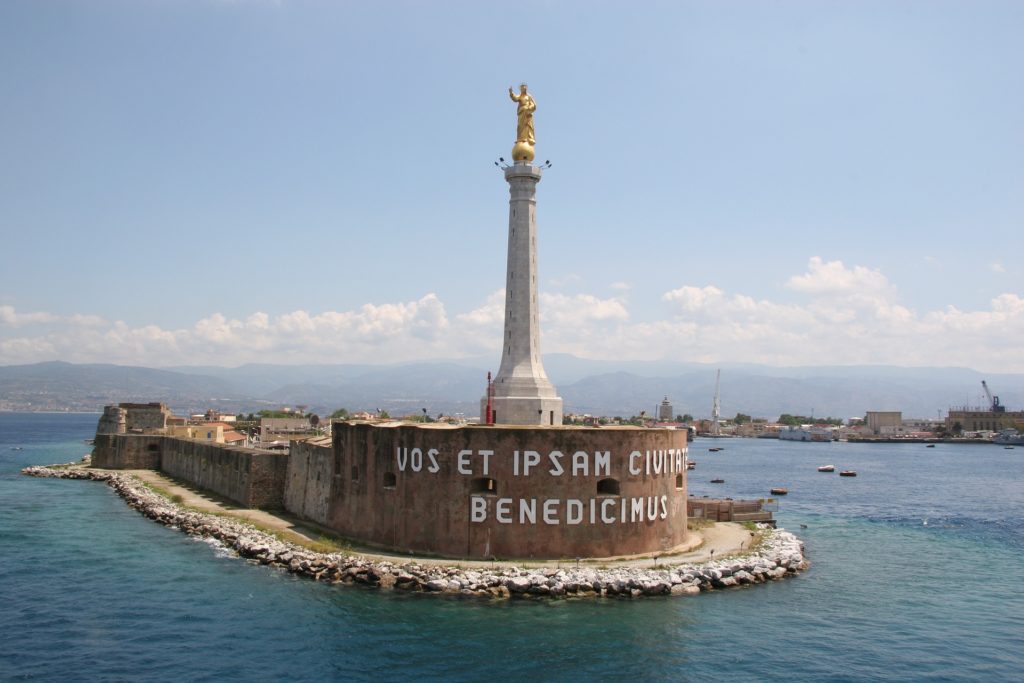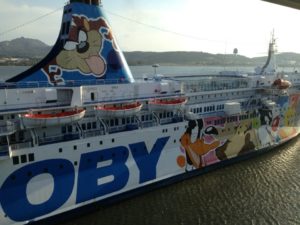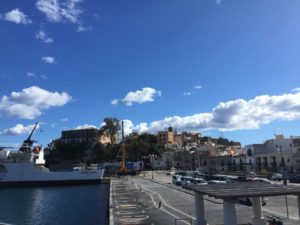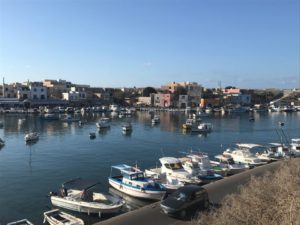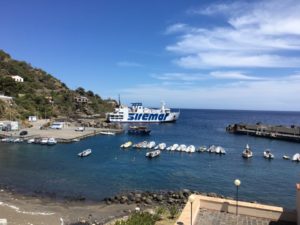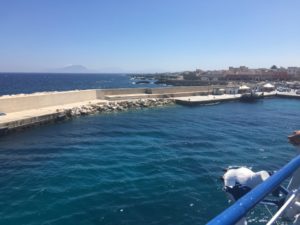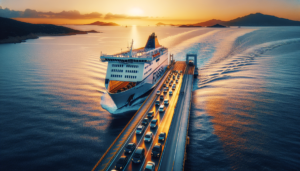What to visit in the territory of the Municipality of Messina
Messina occupies the tip of Sicily facing the Boot and is bathed by three seas, the Ionian Sea, the Tyrrhenian Sea and the Strait, along the coast of which the municipality, which is the longest and most coastal in Italy, extends in a large part, while the metropolitan city of the same name, of which it is the capital, includes another 107 municipalities.
At the entrance to the port of Messina, it is the gilded bronze statue of the Madonna della Lettera, patroness of the city, sculpted by Tore Edmondo Calabrò and placed on top of an octagonal stele, that captures the attention. At the base of the column, the Latin inscription reads “We bless you and your city”. The monument was inaugurated in 1934 in radio link with Pope Pius XI.
The first Greek colony in Sicily, it was called by the Sicilians Zancle (zanclon, sickle) due to the peculiar sickle-shaped arm of the port; following the settlement of other Greek peoples it became Messene. In the Siceliot poleis, during the first centuries before Christ, Sicels, Ionians and Messenians integrated.
Let’s see what are the points of interest not to be missed when visiting the municipality of Messina, whose port is connected not only to the Calabrian coast, to the Aeolian Islands and in high season with Milazzo and Palermo: throughout the year, in fact, the ferries on the Salerno – Messina line make this maritime journey very convenient for those traveling by car from lower central and upper southern Italy, who have the opportunity to embark with a vehicle in tow, avoiding driving for a good distance.
1) Messina Cathedral
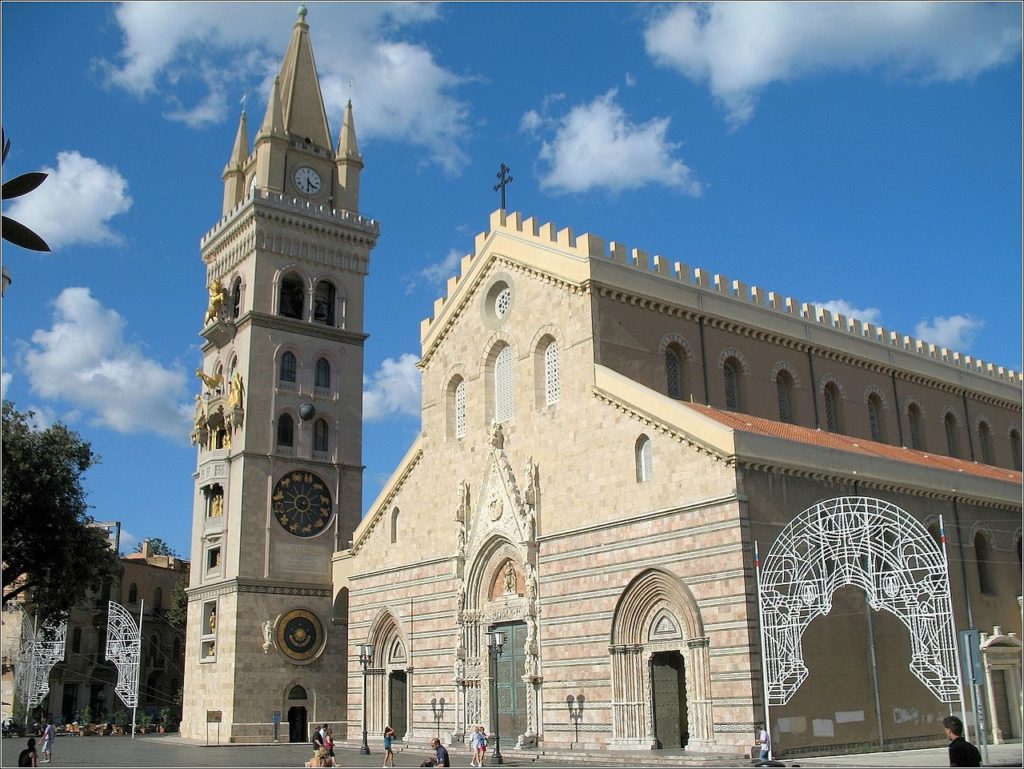
Messina Cathedral has been transformed several times over the centuries and different architectural styles blend in it, from Romanesque to Norman, from Gothic to Baroque. The so-called Treasury of the Cathedral, kept and displayed in the added body on the southern side, is made up of precious cult objects. An astonishing astronomical clock, the largest in the world, is integrated into the bell tower, which can also be accessed. In addition to the dials, there are bronze automatons that perform spectacular movements on the square every noon, a planetarium and a perpetual calendar.
2) Palazzo Zanca
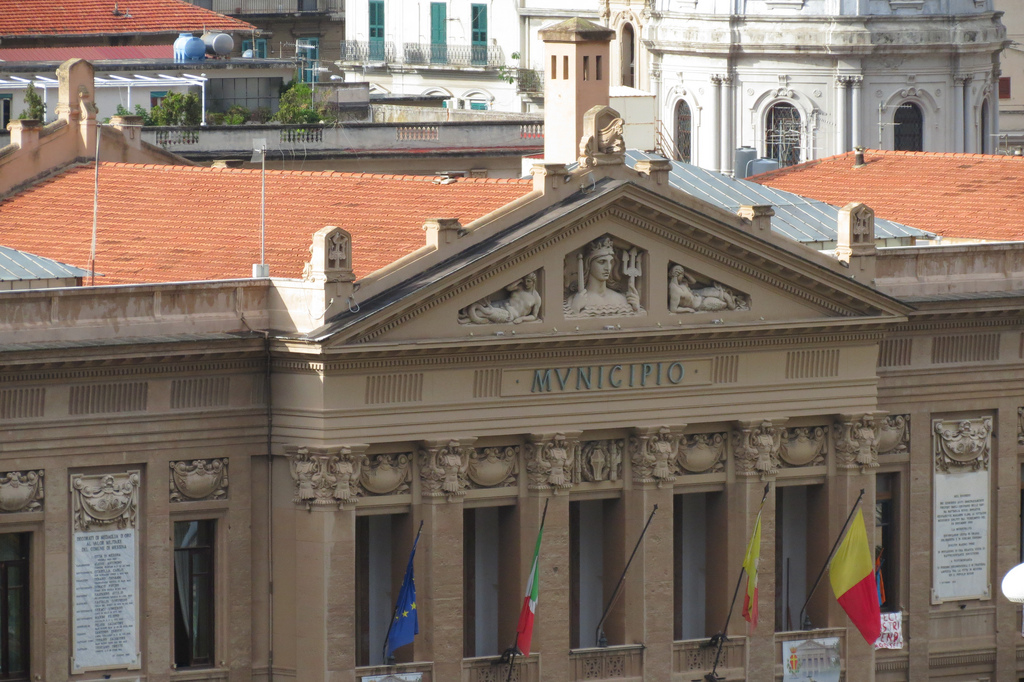
Antonio Zanca was the architect who, after the earthquake that destroyed the city in 1908, was responsible for rebuilding the municipal seat in the neoclassical style. On the facades of Palazzo Zanca some sculptures are visible, such as the one depicting the Queen of Peloro and two sirens, or the bas-reliefs representing the heroines of the Sicilian Vespers Dina and Clarenza. Inside the building there are the remains of walls from the Greek era.
3) Orion Fountain and Aquarium
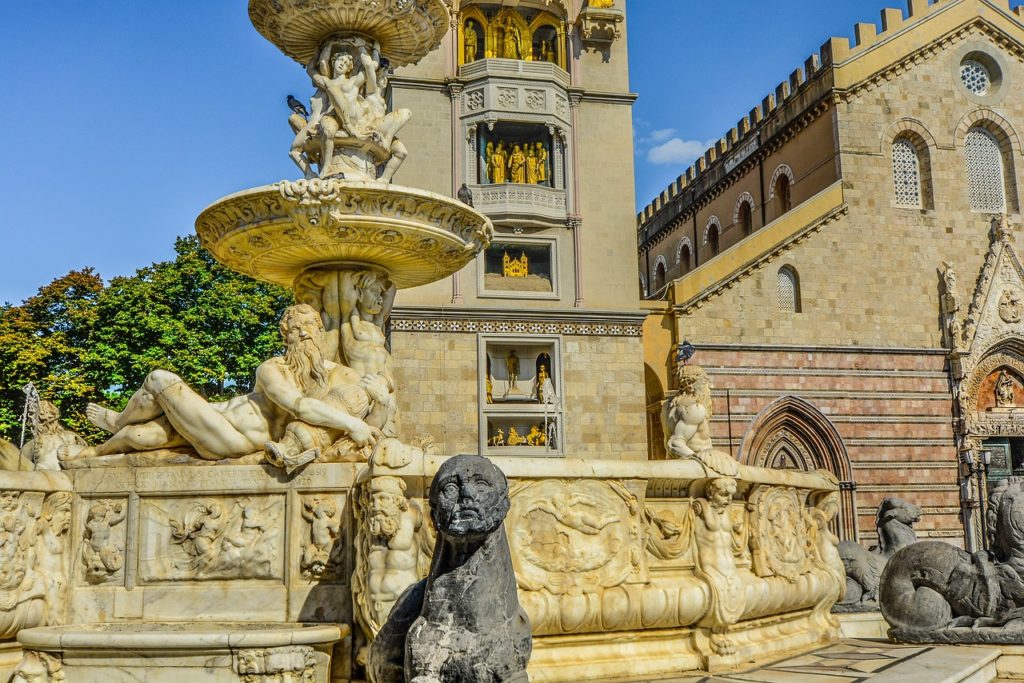
The Orion Fountain dates back to 1553, when Michelangelo’s pupil Giovan Angelo Montorsoli was commissioned to celebrate the end of the construction of the aqueduct with this monument, defined by the art historian Bernard Berenson as the most beautiful fountain of the sixteenth century in Europe. The Messina Senate appreciated the work and also commissioned the Florentine sculptor to create the Fountain of Neptune, currently located in the square in front of the Prefecture building (in the square Piazza Unità d’Italia). At this point, you can take a walk to Villa Mazzini (located in Largo Seguenza), a public garden where the Messina Aquarium is located, a large tank with aquatic games inhabited by fish, molluscs, crustaceans and reptiles from the Mediterranean.
4) Church of the Santissima Annunziata dei Catalani and Palazzo del Granchio
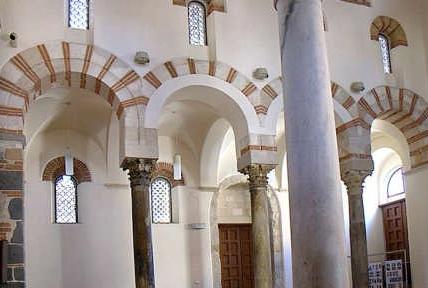
In the Church of the Santissima Annunziata dei Catalani, Byzantine, Romanesque, Arab and Gothic styles are mixed, an expression of Arab-Norman architecture in Sicily. It was, in this case only partially, destroyed by the terrible earthquake that devastated Messina in 1908, dramatically collapsing numerous religious and civil buildings, monuments and homes; the canvas of the Immaculate Conception and the 16th century panels are now kept in the Regional Museum of the city. The chromatic play and the shapes of the apse and the dome above, both internally and externally, are wonderful.
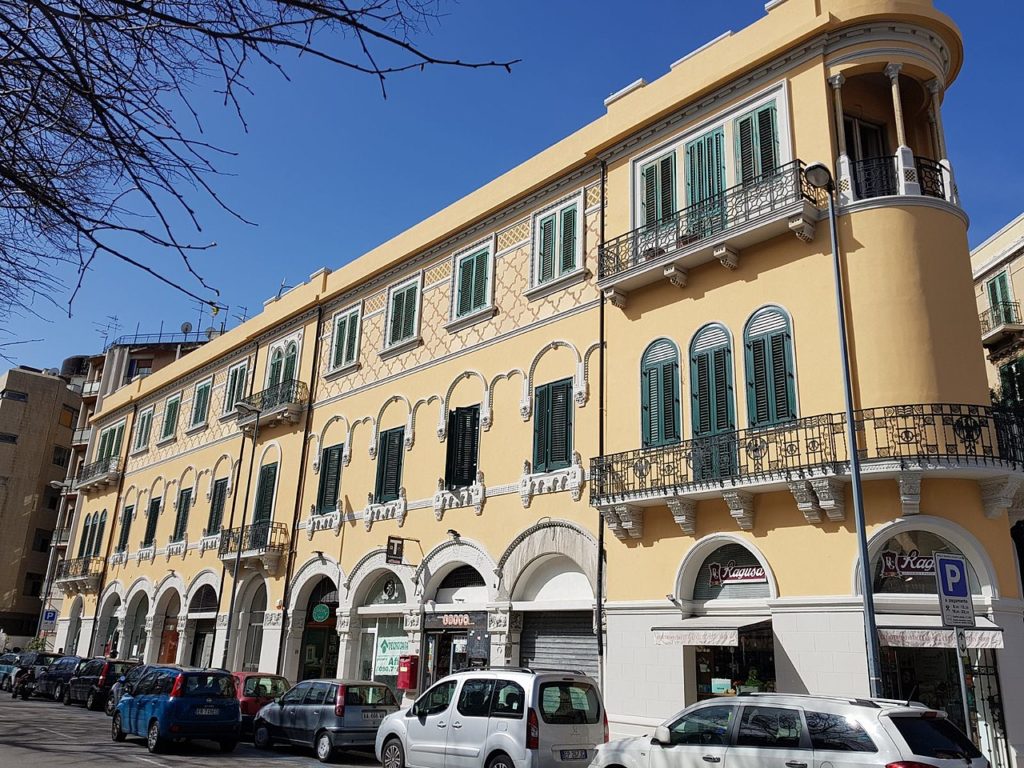
A few steps away, we can look at the exteriors of Palazzo del Granchio and Palazzo Magaudda, built by the Florentine architect, sculptor and decorator Gino Coppedè in the style of Messina Liberty eclecticism at the beginning of the 20th century.
Coppedè’s third work in the city, Palazzo Tremi, is instead located at the crossroads between via Centonze and via Saffi.
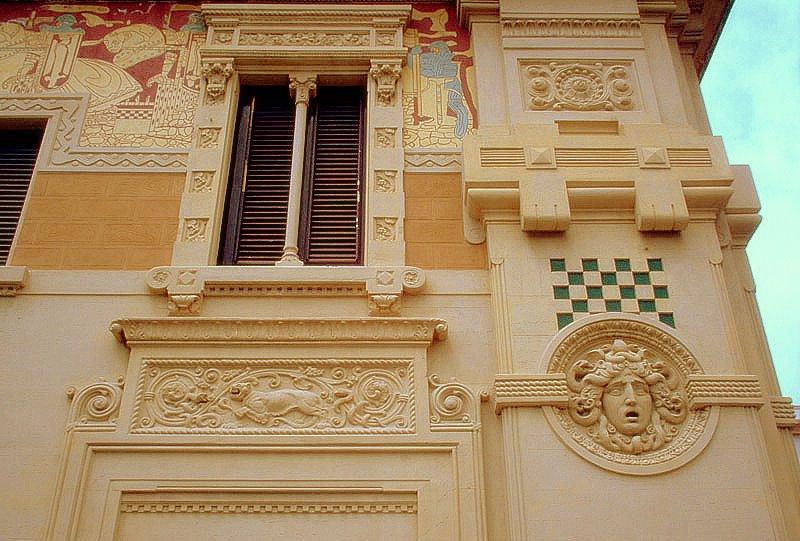
Also called Palazzo del Gallo for a weather vane depicting a rooster that was on the terrace, it was built for the Colonel of the Carabinieri Vittorio Emanuele Tremi.
5) Vittorio Emanuele III Gallery
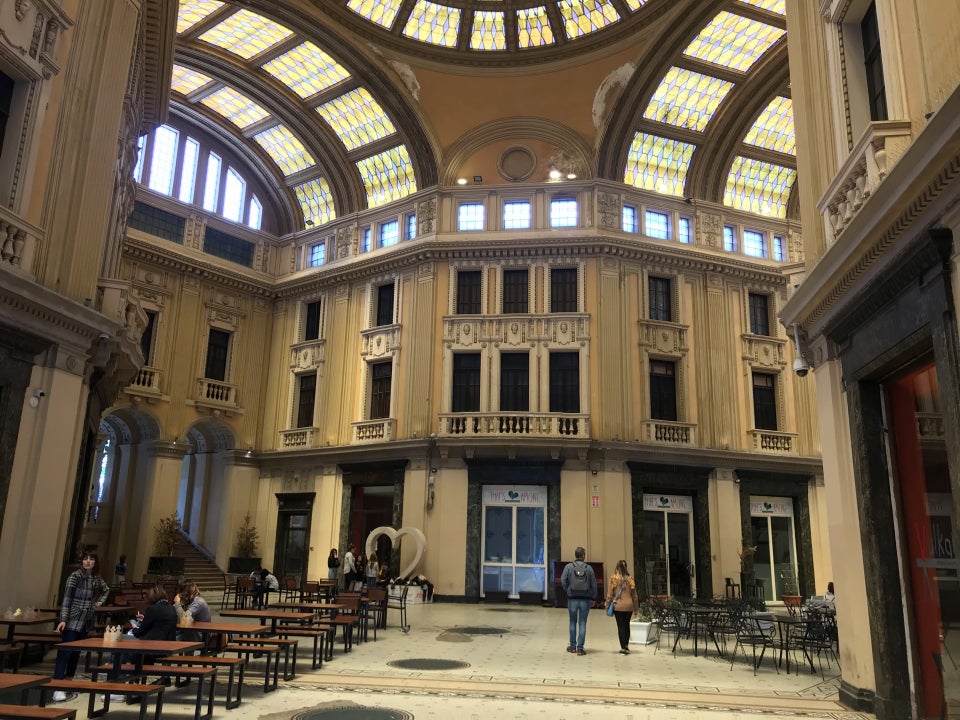
A monumental arch on Piazza Antonello leads to the central portico of the Vittorio Emanuele III Gallery, a typical example of that eclectic Art Nouveau architecture in Messina which characterized the reconstructions after the terrible earthquake; it is an asset of historic-artistic interest. The hexagonal center where the three arms converge has a domed vault, glazed like the barrel vaults; the sculpted decorations and mosaics on the floor are also magnificent. There is no shortage of bars and restaurants where you can sit down.
6) Interdisciplinary Regional Museum of Messina
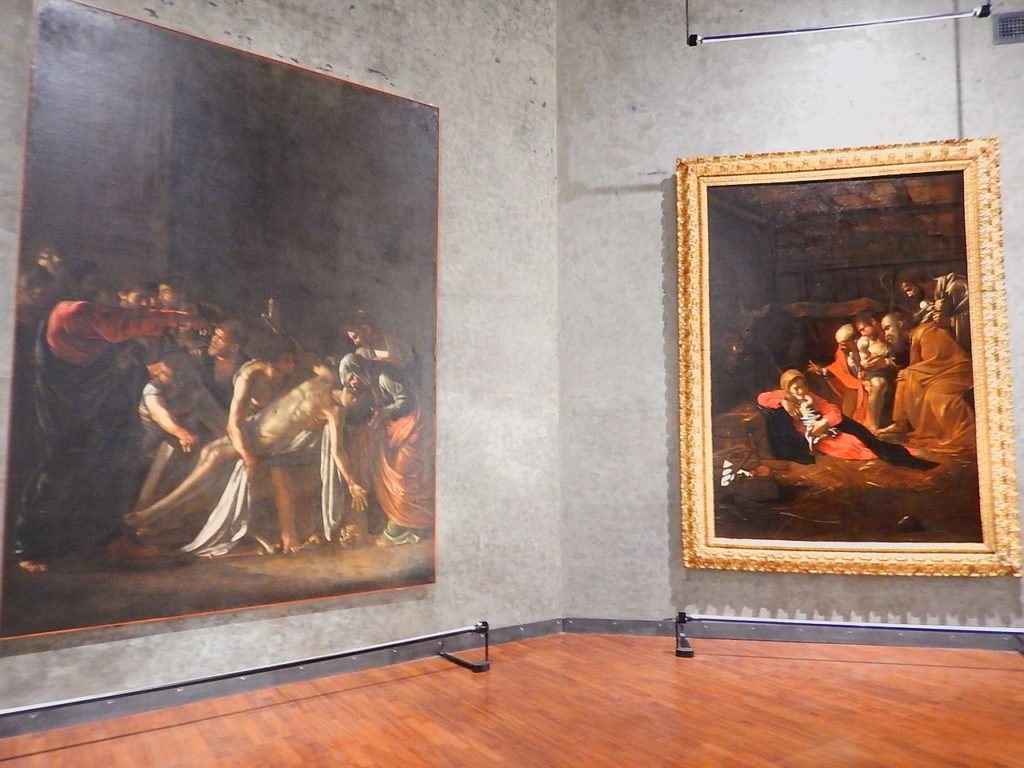
In the Regional Interdisciplinary Museum of Messina, in Viale della Libertà, works of the caliber of Caravaggio’s paintings “Adoration of the shepherds” and “Resurrection of Lazarus” are kept, but also other paintings, sculptures, inlays, sacred furnishings and artistic works in marble, gold, fabric, ceramics, wrought iron and wood of remarkable workmanship. It is Messina figurative art of the period from the twelfth to the eighteenth century. In addition to the internal exhibition space, the MuMe itinerary also takes place in the verdant external areas.
7) Pietro Castelli Botanical Garden
The University Botanical Garden is entitled to the doctor and botanist Pietro Castelli, the founder, it was created and sold to the University of Messina in 1638, and it hosts many native and exotic plants with the aim of protecting biodiversity and disseminating botany. There are collections of succulent plants, cycadaceae, carnivorous and aromatic plants. Among vegetable gardens, flowerbeds and greenhouses, the crowns of the many trees are barely contained by the gate in this green lung in Piazza XX Settembre.
8) Shrine of Cristo Re
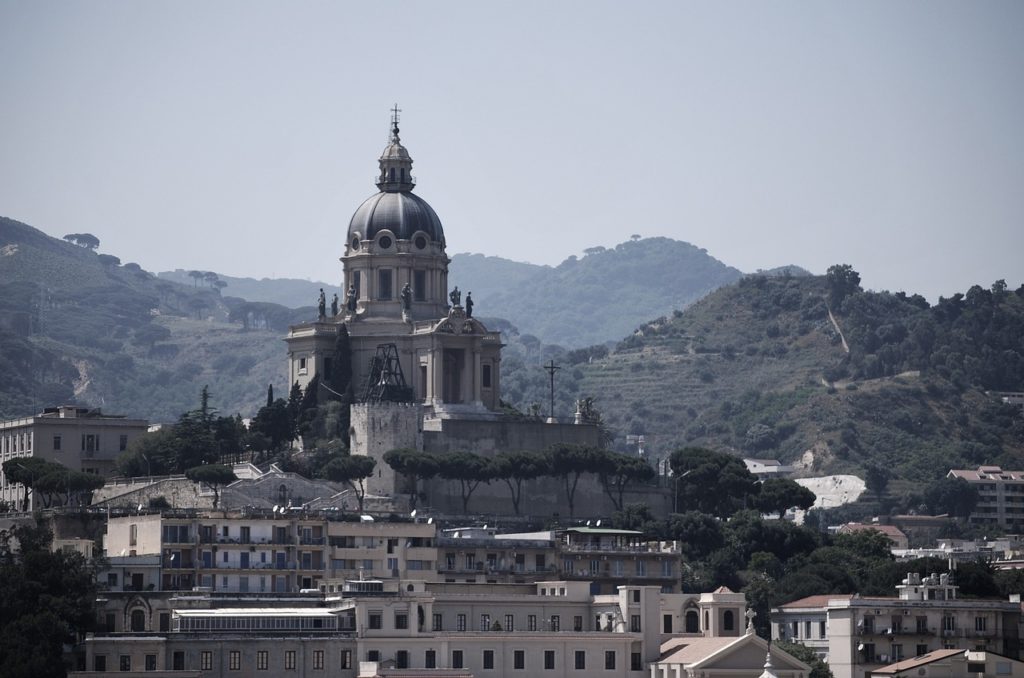
Perched on a hill near the centre, the Shrine of Cristo Re was erected where the castle of Matagrifone once stood, of which only one tower remains. The Baroque-style religious building, designed in 1937, dominates the city with its large dome, with eight bronze statues at its base. The statue of Christ is located at the entrance of the structure, which is spread over two levels, the lower and the upper temple, with a superimposed bell tower. From the “Giovanni Angelo Montorsoli” lookout, in front of it, the panorama also includes the Strait.
9) Forte Gonzaga
Built for defensive purposes in 1540 by the military engineer Antonio Ferramolino at the request of the Sicilian Viceroy Ferrante Gonzaga on the hill of Montepiselli, the fort or Castel Gonzaga, in tuff and limestone, has six bastions and it is surrounded by moats. Inside there are several rooms and on the terrace level there is a chapel, while on the terrace of the highest floor there are two watchtowers. The structure, managed by the municipality, can be visited through the Gonzaga Association.
10) Sanctuary of the Madonna di Montalto
The church and monastery that make up the Sanctuary of the Madonna di Montalto, to which the people of Messina are spiritually very attached, were built on the Caperrina hill after the Sicilian Vespers and rebuilt two years after the earthquake; the complex was enlarged, with the addition of two spire bell towers, in 1928. It is said that the Madonna delle Vittorie appeared in defense of the people during the war of the Vespers. On the veranda, the statue of Pope John Paul II installed in memory of the pontiff’s visit in 1988 faces the panorama.

